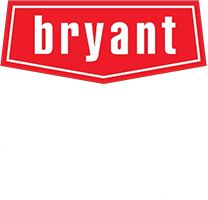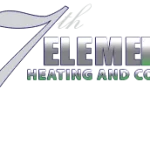Planning for a Future of Home Comfort
Your home’s heating, ventilation, and air conditioning (HVAC) system works tirelessly behind the scenes to keep your family comfortable through Caldwell’s cold winters and hot summers. It’s one of the most important investments in your home, impacting everything from your utility bills to your indoor air quality. But like any major appliance, it has a finite lifespan. Deciding when to repair versus when to invest in a full HVAC system replacement can be a significant decision. This guide is designed to help you recognize the signs of a failing system, understand the substantial benefits of an upgrade, and confidently navigate the replacement process.
Key Signs Your HVAC System Is Nearing the End
An unexpected breakdown is the last thing any homeowner wants. Paying attention to your system’s performance can help you plan for a replacement on your own terms. Here are the most common indicators that it’s time to start considering an upgrade:
Age of the System
Most furnaces last 15-20 years, while central air conditioners typically last 10-15 years. If your system is within or beyond this range, it’s operating on borrowed time. Its efficiency has likely declined significantly, and the risk of a major component failure increases with each passing year.
Rising Energy Bills
Are your heating and cooling costs creeping up without a change in your usage habits? As HVAC systems age, their components wear down, forcing them to work harder and consume more energy to produce the same level of comfort. A new, high-efficiency system can lead to dramatic savings.
Frequent and Costly Repairs
If you find yourself calling for HVAC repairs more and more often, it’s a clear red flag. A good rule of thumb is if a single repair costs 50% or more of a new system, replacement is the more financially sound option. Constant repairs are a sign of systemic failure.
Inconsistent Temperatures & Comfort
Are some rooms in your house too hot while others are too cold? This indicates your system can no longer distribute air effectively. It might be an issue with the unit itself, or it could be a chance to explore solutions like an HVAC zone system for customized comfort.
The Tangible Benefits of a Modern HVAC System
Investing in a new HVAC system is not just about avoiding future breakdowns; it’s about upgrading your home’s overall health and efficiency. Modern technology offers significant advantages over systems built just a decade ago.
- Superior Energy Efficiency: Today’s systems come with higher SEER2 (Seasonal Energy Efficiency Ratio 2) ratings for air conditioners and AFUE (Annual Fuel Utilization Efficiency) ratings for furnaces. This translates directly into lower monthly utility bills and a smaller carbon footprint.
- Improved Indoor Air Quality: Older systems can circulate dust, allergens, and mold. A new system, especially when paired with modern solutions like a whole-house humidifier or advanced filtration, provides cleaner, healthier air for your family.
- Quiet and Consistent Operation: Advanced motor and insulation technologies make new units significantly quieter. They also provide more consistent heating and cooling, eliminating the dramatic temperature swings common with older models.
- Enhanced Home Value: A new, high-efficiency HVAC system is a major selling point for potential buyers, demonstrating that a home has been well-maintained and is energy-efficient.
For even greater efficiency, many homeowners are switching to heat pumps, which provide both heating and cooling in a single unit. They are exceptionally efficient, especially in the milder parts of Idaho’s winters.
Did You Know?
According to the U.S. Department of Energy, heating and cooling account for nearly half of the energy use in a typical U.S. home. Upgrading an HVAC system that is just 10 years old with a new, high-efficiency model can reduce your energy consumption for heating and cooling by 20% to 50%.
The HVAC Replacement Process: What to Expect
A professional HVAC installation is a meticulous process designed to ensure your new system performs optimally for years to come. Here’s what the journey looks like with a trusted partner like 7th Element Heating and Cooling.
Step 1: Thorough Home Assessment. The process starts with a comprehensive evaluation of your home. A technician will assess your existing ductwork, insulation levels, window quality, and home size to perform a “load calculation.” This ensures the new system is perfectly sized for your specific needs—not too big and not too small.
Step 2: System Selection & Options. Based on the assessment and your budget, you’ll be presented with several equipment options. This includes different efficiency ratings, technologies like variable-speed motors, and potential upgrades such as zoning systems or smart thermostats. This is your opportunity to ask questions and find the perfect fit for your family.
Step 3: Professional Installation Day. Certified technicians will arrive to carefully remove your old equipment and prepare the area for the new system. This includes ensuring proper placement for airflow, secure electrical and fuel connections, and correct calibration. This process for a furnace or air conditioning installation is typically completed within a day.
Step 4: System Testing & Walkthrough. Once installed, the entire system is rigorously tested. Technicians check thermostat calibration, airflow, and safety controls. You’ll then get a full walkthrough of your new system, including how to operate the thermostat and recommendations for filter changes and ongoing care.
Step 5: Ongoing Support. The relationship doesn’t end after installation. Reputable companies offer robust warranties and preventative maintenance plans to keep your investment running at peak performance and efficiency.
Your Local HVAC Partner in Caldwell
Choosing the right HVAC contractor in the Caldwell area is just as important as choosing the right equipment. You need a team that understands Idaho’s climate and is dedicated to quality workmanship and honest communication. At 7th Element Heating and Cooling, we pride ourselves on providing transparent advice and expert installations. We’re your neighbors, and we are committed to ensuring your home is a sanctuary of comfort and health for your family.
Ready to Explore Your Options?
If you’re noticing the signs of an aging system or simply want to learn more about upgrading to a high-efficiency solution, our team is here to help. We offer no-pressure consultations and clear, upfront estimates.
Frequently Asked Questions (FAQ)
How long does a typical HVAC system replacement take?
A standard, straightforward replacement of both a furnace and an air conditioner can usually be completed by a professional team in one full day. More complex installations, such as those requiring new ductwork, may take longer.
What’s more important: the HVAC brand or the installation quality?
While reputable brands offer reliable equipment, the quality of the installation is paramount. An improperly installed system, regardless of its brand or efficiency rating, will fail to perform correctly and can lead to premature failure. Always choose a licensed, experienced, and highly-rated installation company.
Should I replace my furnace and air conditioner at the same time?
It is highly recommended. Furnaces and air conditioners often share components, like the air handler (blower). Replacing them together ensures all components are new, matched for optimal efficiency, and covered by a new warranty. This “matched system” approach maximizes performance and energy savings.
Can I get financing for a new HVAC system?
Yes, many HVAC companies, including 7th Element Heating and Cooling, offer financing options to help homeowners manage the cost of a new system. This allows you to invest in a high-efficiency model and pay for it over time.
Glossary of Terms
- AFUE (Annual Fuel Utilization Efficiency)
- A percentage rating that measures how efficiently a furnace converts fuel (gas or oil) into heating energy over a year. A higher AFUE means greater efficiency.
- Heat Pump
- An all-in-one system that provides both heating and cooling. It works by transferring heat—moving it out of your home in the summer and into your home in the winter.
- Load Calculation
- An engineering analysis used to determine the proper size of an HVAC system for a specific house. It considers factors like square footage, insulation, window types, climate, and home orientation.
- SEER2 (Seasonal Energy Efficiency Ratio 2)
- The standard rating for measuring air conditioner cooling efficiency, updated in 2023 to reflect more realistic operating conditions. A higher SEER2 rating indicates a more energy-efficient unit.
- Zoning System
- A system that divides a home into different “zones,” each controlled by its own thermostat. Dampers in the ductwork open and close to direct heated or cooled air only to the zones that need it, saving energy and improving comfort.

